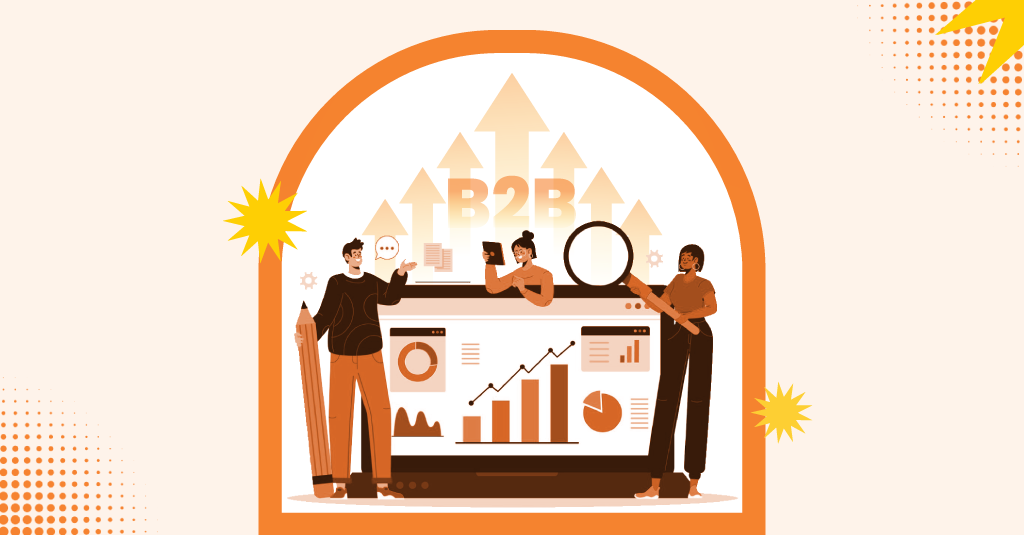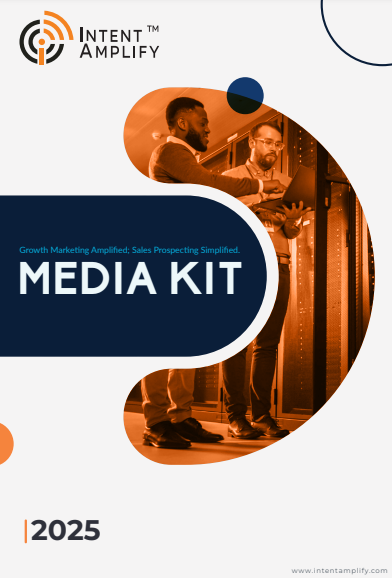
AI Agents in B2B Marketing: The Future of Smart Prospecting
- Last updated on: July 3, 2025
Agentic AI doesn’t respond – it acts. It independently formulates goals, explores vast data environments, runs live analytics, and modifies actions based on outcomes. I imagine them as junior strategists who grow into senior contributors.
From Vogue Business, agentic AI is germinating in sectors, with organizations experimenting with visible (externally facing) and invisible (backend-enabling) roles
In B2B marketing, that duality appears as agents that craft personalized outreach on behalf of prospects while secretly optimizing campaign assets.
Why is 2025 a turning point?
McKinsey’s June report cites the emerging “agentic AI mesh” architecture, whereby coordinated agents collaborate to deliver integrated workflows, growing increasingly essential for business scalability
Adobe also introduced a suite of purpose-built agents managing activities from trip optimization to data ingestion, showing enterprise-grade maturity in MarTech. And that’s where the human element comes in: now that marketers can let go of laborious, time-wasting activities like Excel-driven prospect lists or generic campaign performance charts, they can focus instead on relationship-building, strategy, and storytelling. It’s like having someone else do data gathering and synthesis overnight; you wake up ready to lead.
Visionaries at HCLTech and Salesforce have begun rolling out these agents at enterprise scales, further cementing the fact that the shift is not about tools, it’sa change at an organizational level
Agentic AI is no longer theoretical. It’s a working, practical layer working with, not against, humans. Combined with governance, oversight, and ethics guardrails, this shift is gradually transforming B2B marketing in a quiet revolution.
Intelligent Prospecting: AI Agents in Action
LinkedIn-powered Prospect Discovery: Trads were founded on hand crawls going through titles, parsing lists of firms, and tagging profiles with tags. It was time-consuming and riddled with bias. Agentic systems now use LinkedIn’s vast database, augmented by intent signals and proprietary score algorithms, to seek out high-potential opportunities.
According to LinkedIn, 56% of sales professionals now rely on AI every day; those who do are more than twice as likely to meet their goals. AI-driven discovery not only reveals stronger prospects but continuously changes as activity signals shift, such as a prospect downloading a related whitepaper or switching roles.
Consider the example of a recent one: a technology services firm hired agents to monitor the ripple effects of regulatory changes in target industries. In days, the system picked up executives on expansion mode at five companies just when they were preparing bids. Outreach made shortly afterward recorded response rates 35% higher than standard campaigns.
These agents have pattern learning capabilities. They learn from consumptions, tone shifts, and increasing interest indicators. That equates to suggestions like starting a conversation when a prospect comments on sustainability, or scaling outreach to fit their fiscal quarters.
The result? Teams shift ~40% of research time to strategy, creative content, and relationship-building. They spot opportunities more often when they are most applicable, with timing that seems organic, not mechanical.
Genius-Level Personalization
Even the best lead lists fall short of their potential if messages are generic. Artificial intelligence has progressed from template completion to true personalization Agents don’t merely fill in names; they also adapt messaging style, tone, and supporting assets based on a prospect’s recent activity, company news, and industry context.
In March, LinkedIn found that messages written by AI generate 28% better response rates. Yet more detailed performance metrics reveal that messages referencing on-time events (e.g., leadership shifts, funding releases) open 2x faster, especially when they reflect the prospect’s language or strategic goals.
Sleuth agents trained to monitor company blogs, press releases, and executive LinkedIn posts can send such messages as:
“Congratulations on your recent expansion into Europe. Many firms we’ve worked with found centralizing compliance early avoided 30% of post-launch delays.”
This level of resonance isn’t just smart it’s human. It conveys awareness and respect for the prospect’s priorities. One VP shared in a webinar that their conversion pipeline doubled after implementing event-driven personalization notices anecdotal but compelling evidence.
Behind the scenes, agents devour CRM information, intent web signals, and past email engagement, and then build outreach that caters to each prospect’s content likes, length, tone, and format. Some even recommend quick video pitches when analytics show the prospect enjoys rich media.
Marketers get to refine workflows and establish relationships, while AI generates the first draft of empathy-based conversation. That partnership enhances both efficiency and authenticity.
Tested Results: Time, Quality, Revenue
- Agentic AI is not theoretical: it generates measurable returns.
- Efficiency Gained
- Time saved: LinkedIn’s Return on Investment in AI report cites 1.5+ hours saved each week by 38% of AI-researching sellers
- Workflow acceleration: Salesforce reports reps who use AI daily have a cycle deal ~1 week earlier, 68% close more often
- Routine automation: Adobe’s platform aligns content creation and data insights across its marketing suite, saving weeks of manual setup time.
Lead Quality & Conversion
McKinsey’s June “agentic mesh” report places agents as enablers of real-time decision-making, in perfect sync with human intuition and reduced errors. LinkedIn’s bigger dataset shows 88% of sales professionals report AI improved ROI immensely, and 84% save daily on routine tasks.
Example: a major professional services firm integrated AI into their account-based marketing efforts and increased conversion rates by 18%, with a reduction in CPL (cost per lead) of 22%.
Early adopters have an end-to-end impact. Organizations that rolled out agents to lead scoring and outreach saw a 12–15% deal velocity lift, and pipeline velocity lift by 25% on pilot batches. Some observe revenue-per-rep growth of 8–10% per quarter.
PwC confirms 83% of CEOs recognize agents as key to resolving business challenges more productively.
It’s not incremental; agentic AI is a performance lever that pays out at scale.
Guardrails: Human Connection, Trust & Governance
AI agents excel at efficiency, but require ethical guardrails and human oversight for trust to be maintained.
Keeping the Human Connection Alive
Salesforce reinforces that agents are guides, not empathy substitutes. They pre-brief reps, flag language nuance, and provide relationship-building recommendations
Aalto University research vindicates that computerized outreach must keep truth in targeting and tone, over-automation risks losing connection with prospects.
Trust, Transparency & Governance
Second-mover models can reduce risk while maintaining the pace of innovation, evidence reveals.
It’s critical to implement pilots with well-defined boundaries, specifically regarding data management, message control, and decision documentation.
Scaling agentic designs with risk management embedded is McKinsey’s advice protection against bias, data drift, and compliance gaps. Harvard’s TRiSM framework (Trust, Risk & Security Management) brings accountability across architecture layers.
On the Horizon: Multi‑Agent Orchestration
Multi-agent systems take AI to the next level by enabling autonomous cooperation within organized frameworks.
Accenture’s multi-agent deployments some 50+ systems and counting demonstrate how agents can self-coordinate across marketing, finance, and logistics
In B2B marketing, this could mean:
- A research agent captures signals.
- A scoring agent ranks accounts.
- A messaging agent is composing a customized copy.
- A compliance agent verifies the use of data.
- An orchestrator queuing tasks and flagging human review.
This AI ecosystem frees marketers to spend time on strategy, creative direction, and responsive engagement.
Emerging start-up projects like Keyway in real estate are promising, but current systems remain half-guided. Complete autonomous agents not reliant on choreographed workflows are beginning to emerge
In the future, incorporating standards like Model Context Protocol (MCP) will enable cross-platform interoperability, enabling agents to tap into CRMs, financial systems, or Web activity streams
The Top Trends that are Shaping 2025 and Beyond
Hyper-Personalization at Scale: Multimodal analysis (text, voice, behavior) agentic systems individualize communication through interest, language mode, channel liking, and even prospect urgency
Voice & Conversational Interfaces: B2B shoppers are increasingly employing voice search and assistant software. Agentic AI helps pre-optimize messaging for these channels ahead of time, driving the purchase context proactively.
Sentiment Analysis: AI agents monitor fleeting signals, tone shifts in emails, response rate drops, and suggest recalibration. Agencies that offer feedback loops against emotional resonance are seeing 33% higher engagement.
Precision ABM (Account‑Based Marketing): DemandSpring anticipates that agentic AI will streamline target lists, outreach budgets, and timing at the individual account level, balancing personalization versus campaign effectiveness
AI Literacy & Ethical Fluency: CMOs place more and more value on AI literacy nearly as much as creative skill. Reskilling teams in prompt design, explainability standards, and data ethics is part of business success.
A Human‑Centered Success Story
Clara, a CMO at a manufacturer, used an agentic pilot to target accounts more. The agent ranked prospects on the basis of public filings, LinkedIn updates, and segment-fit. But Clara also safeguarded the process: emails were filtered weekly before deployment, and every recommendation contained a justification note like “48% lift in pipeline value.”.
Within two quarters, they saw a 45% lift in MQLs (Marketing Qualified Leads) and 20% faster-moving opportunities. Clara credited the success to the synergy: “The agent pinpointed data I’d miss; my team shaped messages that resonated.” The combination of intelligent analysis and human touch resonated with both prospects and internal stakeholders.
Weekly “trust audits” were put in place, reviewing agent outputs, checking for variance, and identifying misalignments. The process allowed for feedback loops, improved model calibration, and upkeep of brand voice consistency.
Clara’s initiative was a template for further application creation of a Center of Excellence for agents, an agent usage handbook, and ongoing training programs.
Making the Transition: A 5‑Step Roadmap
- Start small: Pilot high-value, low-risk processes such as subject-line generation of email or prospect scoring. Use agent output as drafts to be perfected by humans.
- Align agents with goals: Choose KPIs time saved, response lift, conversion rate, and send agents with those goals as a focus.
- Govern closely: Create datasets, ethics fact sheets, quality checkpoints, and human approval triggers. Keep transparency at the center.
- Upskill your team: Train employees as AI colleagues leading prompt practices, result analysis, and agent tuning rather than basic tool skills.
- Scale responsibly: Scale after pilots have taken ownership, to multi-agent orchestration. Embed Agent-to-Agent protocols and aggregate agent logs for traceability.
This phased, human-centric approach reflects McKinsey’s proposed path towards agentic adoption
Potential Areas of Focus
- Ethical data collection and privacy-sensitive architecture.
- Anti-bias techniques in training datasets for agents.
- Explainability standards so every decision has a traceable basis.
- Remaining communicatively authentic, avoiding a mechanical voice.
- Continuous human monitoring, auditing, quality management, and agent training.
- Each medium leaves space for trust establishment and competitive differentiation enhancement.
FAQs
Q1. How do AI agents determine whom to prospect?
They read signals for career changes, intent downloads, company news, previous interactions, and rate prospects on behavior, fit, and engagement likelihood.
Q2. Can AI-generated outreach sound genuine?
Yes, with context awareness and human oversight. Agents modulate tone, use actual-world references, and hand off to humans for final personalization to sound genuine.
Q3. How is data privacy maintained?
Through governance frameworks, secure data pipes, anonymization, audit trails, and moral checklists enforce compliance and transparency.
Q4. What type of oversight is necessary?
Governance entails periodic audits, message inspection, dataset validation, compliance verification, and explainability checks via frameworks such as TRiSM
Q5. Under what circumstances do multi-agent systems excel?
They excel once teams become greater than single use cases, e.g., combining outreach, compliance, analysis, and reporting within one workflow supported by protocols like Agent-to-Agent and MCP.
Future Vision: Agents Supporting Agents
Envision a future where agents communicate seamlessly. One question triggers a chain of processes: research, customization, compliance verification, message dispatch, and follow-up appointment scheduling, all orchestrated by AI, with human oversight only where required.
In such systems, intent articulation, transparency, and traceable decision-making will need to become bedrock. Scholarship like TRiSM provides us with constructs to implement trust and accountability into system architecture. The agentic AI maturity will not rely on autonomy itself, but on disciplined governance and human-AI symbiosis.





